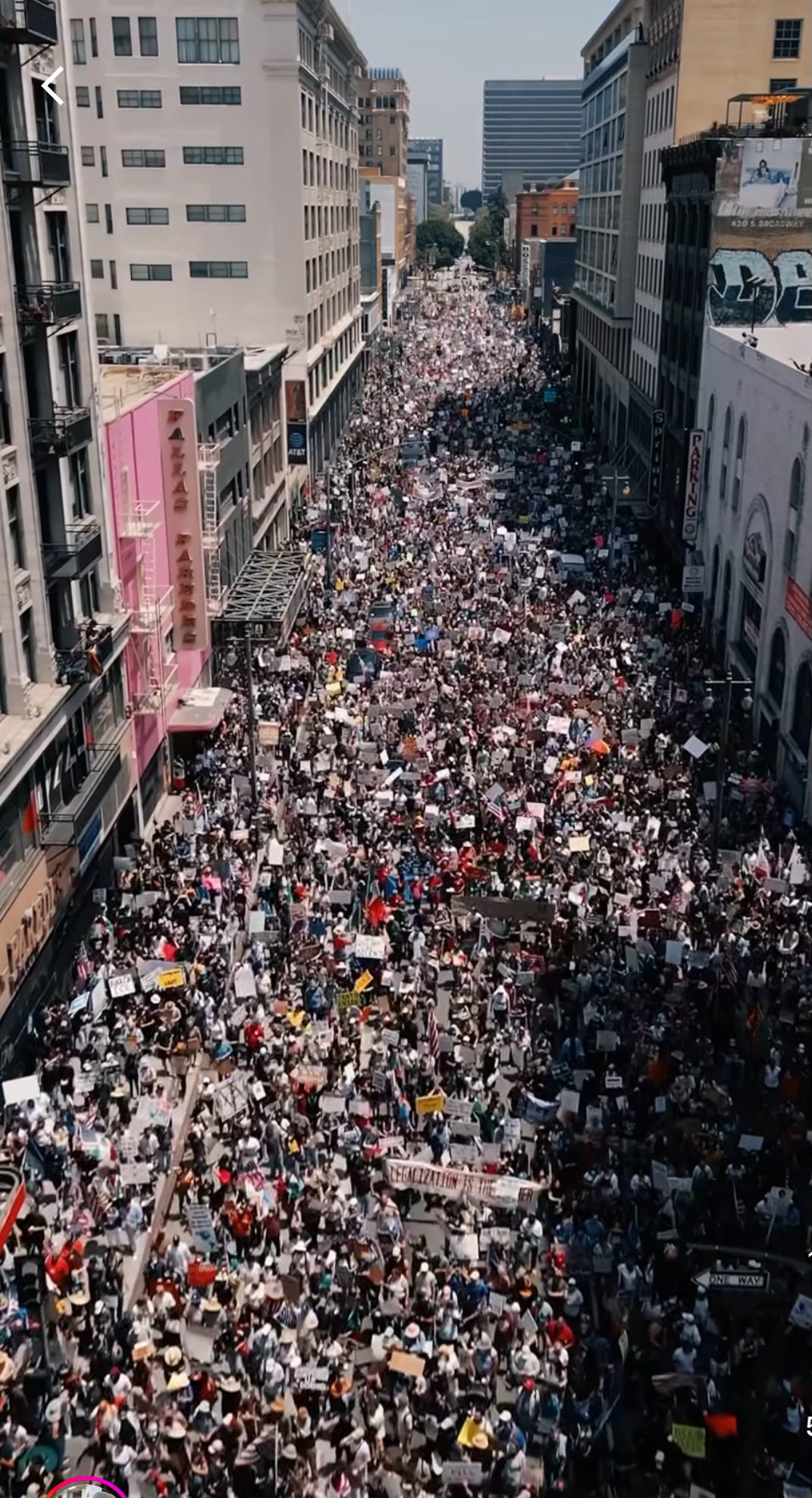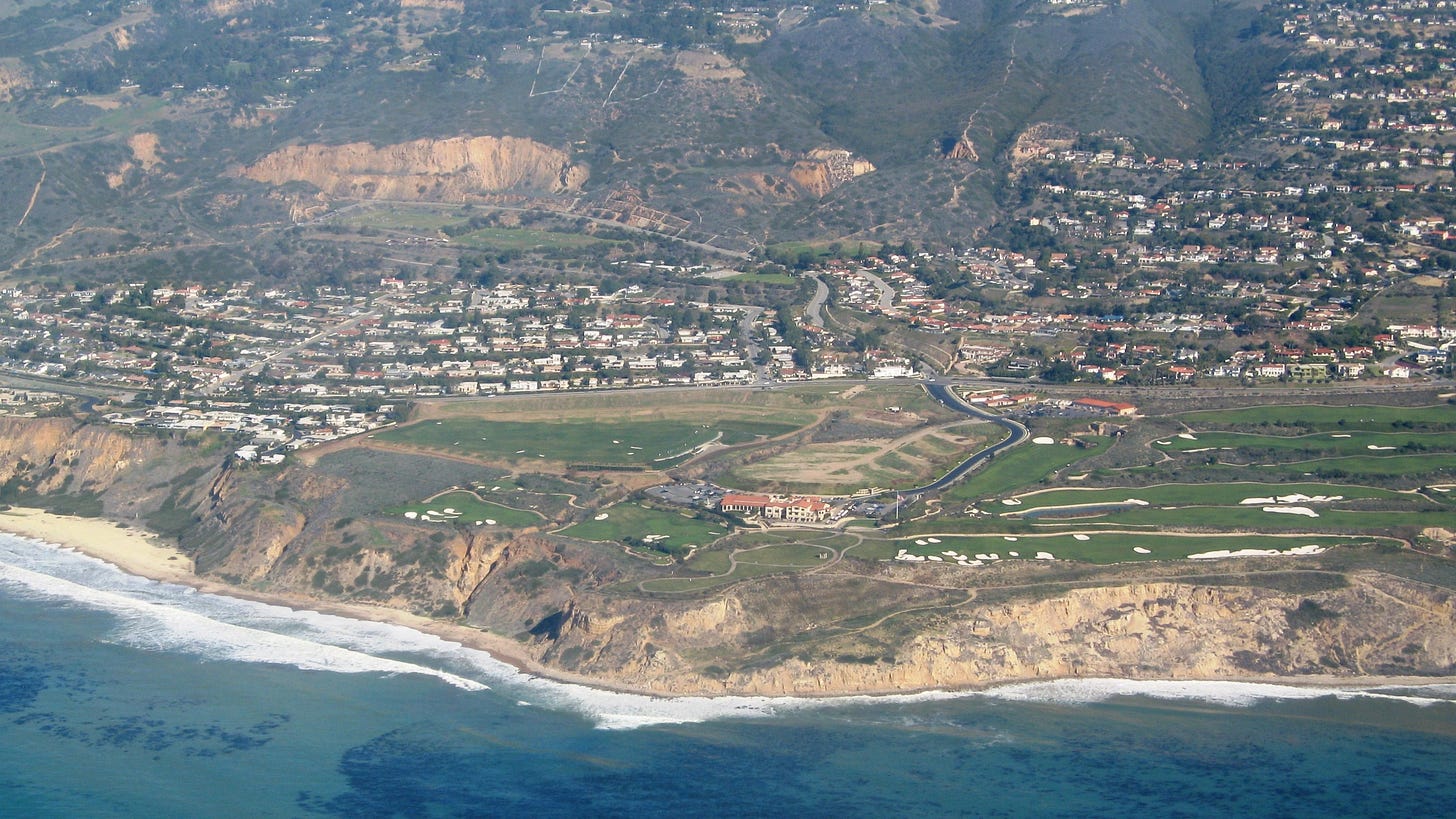
Only two weeks ago I wrote about a stranger who bashed Los Angeles during our encounter in a New York shop. My snappish response was the result of long experience: having heard the full range of hateful remarks from people who have only visited—and some cases have never set foot in—my hometown, I don’t hesitate to fight back.
Soon after I flew home, ICE raids across Los Angeles County began snatching up undocumented workers (and some citizens), sowing fear and outrage. Though the public response was less violent than the aftermath of a Lakers victory, Trump immediately sent in the National Guard—over the objections of Mayor Bass and Governor Newsom. Then, as if that weren’t shocking enough, he called up a battalion of Marines to fight Angelenos on city streets.
The enormous, multiple No Kings protests across Los Angeles last Saturday were the people’s response to these draconian actions. Afterwards, in the face of widespread opposition, legal defeats and panic from farmers and service business owners—many of whom had supported his deportation policies despite their reliance on undocumented labor—Trump backed off, exempting some workplaces from raids. But Los Angeles remains in his crosshairs, and will likely continue to be his authoritarian laboratory.
Chicago, New York and San Francisco are major Democratic cities, yet Trump chose LA for his budding campaign of terror. Why? Size is one reason: 1 in 35 Americans lives in Los Angeles County, and its 88 incorporated cities have a population that exceeds that of 40 states. And unlike Chicago, New York and San Francisco, LA’s geography makes it a megacity of 4,083 square miles. It’s also the one of the most ethnically diverse counties in the United States, with a population built on immigration, both domestic and international.
While these features make Los Angeles a target, there’s another significant factor. Trump was never able to gain a foothold in LA for his real estate development business, despite efforts to replicate his towers in New York and Chicago. Shut out of downtown Los Angeles and other hubs, he settled for Rancho Palos Verdes—as far south as one can go and still be in LA County.
In 2002, Trump* bought a failed golf course that had lost three holes to a landslide three years earlier. Now called the Trump National Golf Course, the enterprise consists of a golf club and housing development overlooking the Pacific. His intent was to replicate his East Coast model in Southern California: a pricey members-only resort, plus McMansions.
Typically, Trump failed to do his research. The California Coastal Commission forbids private facilities on oceanfront properties, so Trump National—unlike Trump’s golf clubs in Florida, New Jersey and other states—is, and will remain, public. But that setback didn’t stop Trump from his usual pattern of litigation, which began almost immediately.
In 2003, Trump sued the Rancho Palos Verdes School District over a land dispute. The suit was settled in 2004, after the District incurred a crushing $100,000 legal bill. Trump paid the $5 million for a parcel of land that the district had leased to the previous owner.
In 2008, Trump sued the City of Rancho Palos Verdes for $100 million over civil rights and due process violations over the its prevention of his development plans. The City settled for an undisclosed sum in 2017, after which Trump sued to move the case to Federal court. Although the resort created 56 single family home lots, to date only 36 houses have been built.
From 2011-2021 Trump fraudulently overvalued the resort by $50 million, according to a 2022 lawsuit filed by New York Attorney General Letitia James. As a result, Trump was able to obtain favorable loan and insurance rates, as well as a significant tax break when the club donated 11.5 acres—after scrapping plans to build 16 houses on the tract—for a conservation easement in 2014.
In 2017, a class action suit brought by nearly 1,000 current and former employees, who claimed sex and age discrimination as well as denial of meal and rest breaks, culminated in a $475,000 settlement.
Thin-skinned, petty and vindictive, Trump has always behaved like a scorned lover whenever his business deals have gone awry. But now that he commands the military—or as he calls it, “My Troops”—he can unleash maximum force. That’s why the response in Los Angeles is beyond reason, a fire hose aimed at a thorn. At this dangerous, unprecedented juncture Trump has chosen chaos, and as always the reasons are personal.
*Although his properties are owned by the Trump Organization, I use Trump’s name because he has never separated himself from his business, either as a citizen or President.




